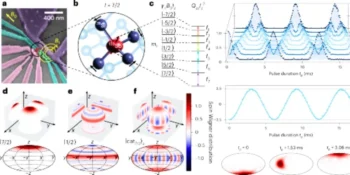The evolution of the energy sector has given rise to the concept of smart grids, a transformative approach to managing and distributing electrical power. This article delves into the current landscape of the smart grid market, exploring key trends, market dynamics, and challenges and offering insights into the future outlook.
Market Overview
Smart grids represent a modernized approach to traditional power grids, incorporating advanced technologies to enhance efficiency, reliability, and sustainability. These intelligent systems leverage digital communication and automation to optimize electricity generation, distribution, and consumption. The smart grid market is at the forefront of the energy industry’s transition toward a more resilient, responsive, and sustainable future.
The market encompasses many solutions, including smart meters, sensors, communication networks, and advanced analytics. The integration of these components enables utilities to monitor and control the grid in real time, improving operational performance and providing consumers with greater control over their energy consumption.
The approximate decision of the Techgolly market research team is the global smart grid market size was valued at least USD 8 billion in 2023 and continues to be projected to reach up to USD 12.5 billion by 2030. The growth will continue at a compound annual growth rate (CAGR) of 5% to 7% from 2023 to 2030.
Key Market Trends
The smart grid market is witnessing several notable trends:
Integration of Renewable Energy
Smart grids are crucial in integrating renewable energy sources such as solar and wind as the world shifts towards a more sustainable energy mix. The ability to manage and balance the fluctuating nature of renewable energy contributes to a more reliable and eco-friendly power grid.
Advanced Metering Infrastructure (AMI)
The deployment of Advanced Metering Infrastructure, including smart meters, enables utilities to collect real-time data on energy consumption. This data gives consumers insights into their usage patterns, promotes energy efficiency, and allows utilities to optimize grid performance.
Grid Modernization Initiatives
Governments and utilities globally are investing in grid modernization initiatives. These initiatives involve replacing and upgrading aging infrastructure with smart grid technologies, ensuring a more resilient and responsive electrical grid capable of meeting the demands of the digital age.
Demand Response Programs
Smart grids facilitate demand response programs, encouraging consumers to adjust their electricity usage during peak demand. It not only helps in balancing the grid but also promotes energy conservation and cost savings for consumers.
Challenges
Despite the promising trends, the smart grid market faces certain challenges:
Initial Implementation Costs
The upfront costs associated with deploying smart grid infrastructure can be substantial. Utilities and governments must navigate financial challenges to justify and fund the initial investment required for widespread smart grid adoption.
Interoperability and Standards
Ensuring interoperability and adherence to standards across diverse smart grid components and technologies is a complex challenge. Standardization is crucial for seamless integration, data exchange, and the compatibility of different systems within the smart grid ecosystem.
Cybersecurity Concerns
The increased connectivity and reliance on digital technologies expose smart grids to cybersecurity threats. Protecting against cyber-attacks requires robust security measures, encryption, and continuous monitoring to safeguard critical infrastructure.
Future Outlook
The smart grid market holds significant promise for the future, with several key developments anticipated:
Edge Computing and Artificial Intelligence
The integration of edge computing and artificial intelligence (AI) will enhance the capabilities of smart grids. Edge computing helps with real-time data processing at the source, while AI algorithms provide intelligent insights, predictive analytics, and automated decision-making for more efficient grid management.
Electric Vehicle Integration
As electric vehicles (EVs) become more prevalent, smart grids will be pivotal in supporting EV charging infrastructure. Smart charging solutions will optimize renewable energy sources, manage charging demand, and contribute to the widespread adoption of electric vehicles.
Decentralized Energy Systems
Smart grids will facilitate the transition to decentralized energy systems, enabling the integration of distributed energy resources, for example, rooftop solar panels and energy storage. This shift towards decentralization enhances grid resilience, reduces transmission losses, and promotes a more sustainable energy ecosystem.
Conclusion
The smart grid market represents a transformative journey toward a more intelligent, sustainable, and resilient energy infrastructure. As the world addresses the challenges of climate change and seeks cleaner energy solutions, smart grids emerge as a fundamental enabler of this transition. Navigating the complexities of implementation costs, interoperability, and cybersecurity will be crucial in realizing the full potential of smart grids. The future outlook is optimistic, with ongoing technological advancements positioning smart grids as a cornerstone of the next-generation energy landscape, fostering a more efficient and sustainable global electricity grid.












